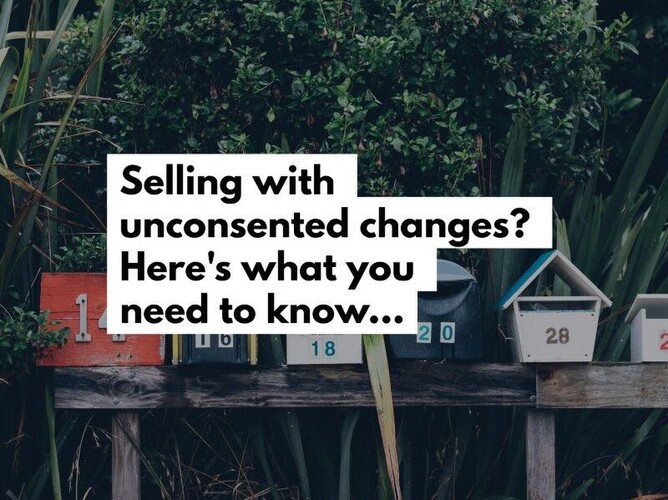The first thing to understand is that lots of houses sell with unconsented changes. It’s more common than you might think.
The key to a successful transaction is to be upfront with all the relevant information right from the start.
Buyers genuinely want to buy a property and they don’t necessarily expect it to be perfect. What they do expect is to be made aware of any important issues before they make an offer. When buyers find out about a problem early on, they have time to gather information, come up with a solution and move forward.
It’s when buyers find out issues right at the end of the process that they understandably get upset. No one wants to discover a problem with their dream home when they’ve already fallen in love, negotiated the price, mentally moved their furniture in and are just waiting on the final ‘seal of approval’ from their builder and lawyer.
“But it was like that when I bought it”
There was a time in real estate when caveat emptor (buyer beware) ruled the day. When houses weren’t perfect but nobody seemed to care. When few buyers checked all the paperwork with a fine-tooth comb before going ahead. Those days are long gone.
In the modern real estate world, buyers expect (and deserve) to know everything there is to know about their future investment. The onus is on the owner and their chosen real estate professional to provide as much info as possible upfront and to seek information out if they see a possible problem.
So please don’t be surprised if we ask you whether something in your home is consented. It’s our job to know. As a seller, you must also confirm that your property has all the necessary consents and code compliance certificates for any building work. If you’ve given consent to any works at a neighbour’s property, the buyer needs to know. The correct approach is to disclose outstanding consents to the agent or the buyer if you’re selling privately.
How bad is it, Doc?
Unconsented changes fall on a wide spectrum. All the way from a basic wooden carport frame tacked on to the side of a house (possibly not a big deal), right up to a house that was never signed off (final inspection) when it was built (probably a very big deal).
In between those two extremes, there are a host of possible changes that sometimes get made without local council signoff under the Building Act.
- An internal wall is removed to make it more open plan.
- A deck gets turned into a conservatory
- Someone excavates under the house to add storage
- A Twizel garage doesn’t look like a garage anymore
- Windows get turned into ranch-sliders
If in doubt…
If you think your home has work that wasn’t signed off by Council, then it’s best to find this out before you go on the market. This is not a time to stick your head in the sand.
Just like a buyer doesn’t want to find an issue at the last minute, you as an owner probably don’t want your impending house sale to fall over at the last minute. Best not to risk having your future buyer withdraw their offer over something that could have been easily fixed or accounted for from the start.
The first step to a successful sale…
Talk to your real estate professional. That’s what we are here for. We can help you work out where to get an understanding of what is consented in your home and what isn’t. From there, we can make a plan and involve your lawyer who can help you draft up the necessary disclosures.
Sometimes, you’ll be able to go straight on the market without making any repairs or changes to your home. If it’s a small issue, then sometimes all that’s needed is a completed disclosure statement and you are good to go.
And if it’s more than that? Well, better to handle it now than risk losing your no.1 buyer right at the end when the champagne is just about to be popped.
https://www.settled.govt.nz/blog/disclosure-for-sellers/


